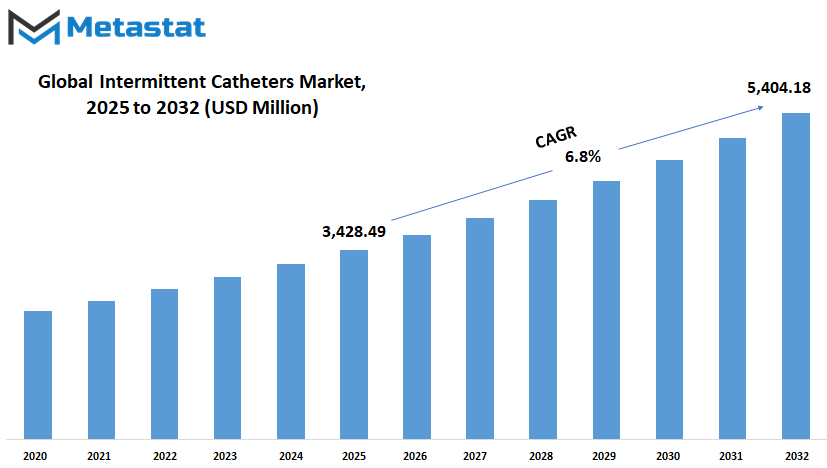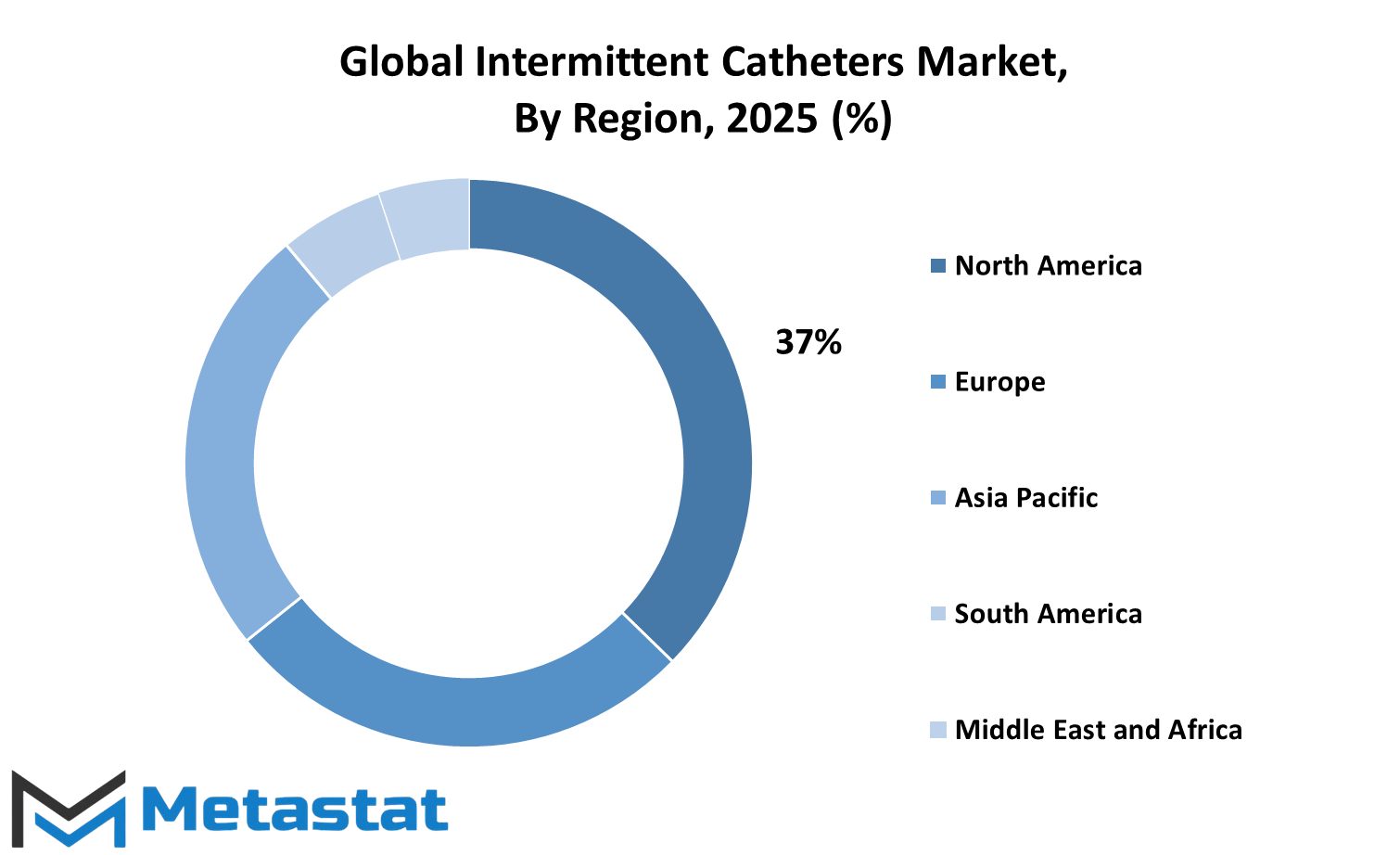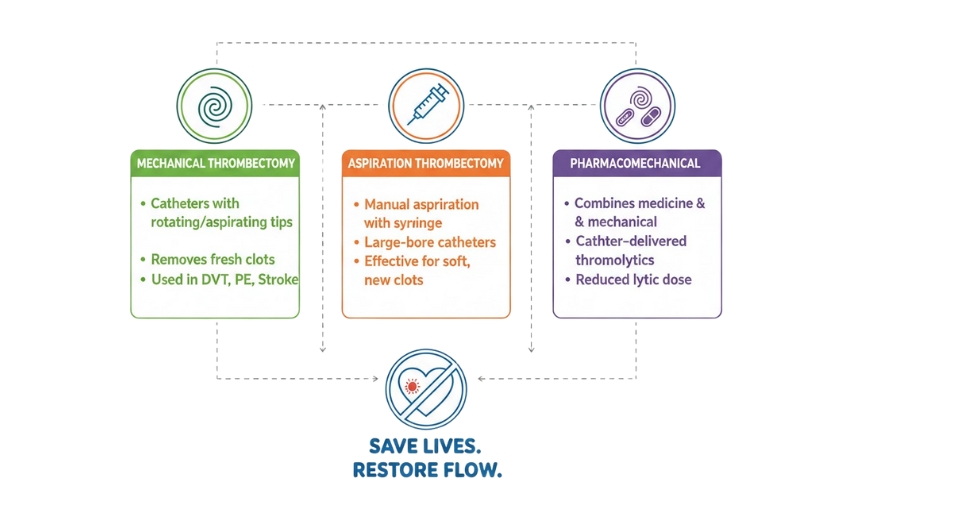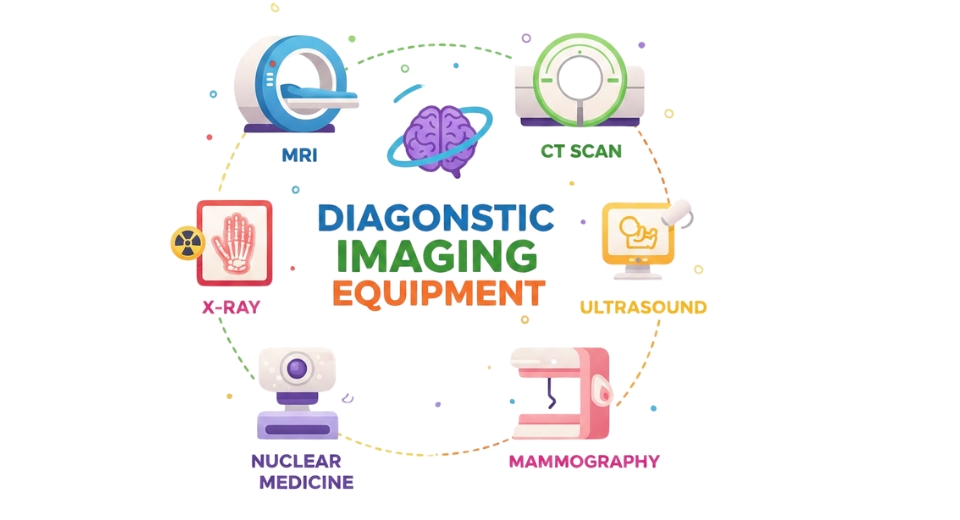MARKET OVERVIEW
The Global Intermittent Catheters market and industry places itself in a very important position within the health sector, because it deals with the designing, manufacturing, and distribution of medical equipment that will be used on patients with urinary retention or dysfunction. An intermittent catheter is a medical device that allows the patient to periodically empty the bladder, which serves as an important alternative for patients who cannot urinate naturally because of certain medical conditions, such as spinal cord injuries, neurological disorders, or surgical interventions. This market is influenced by technological innovations, patient-centric innovation, and an increased awareness of the availability of efficient urinary management alternatives.
As one of the global industries having a significant place in the medical device sector, the Global Intermittent Catheters market will surely expand its area of influence across developed as well as emerging regions. The market scope mainly includes various types of catheters, such as coated and uncoated, intended to fulfill particular kinds of patient needs. The devices can be suited to a number of medical requirements and have reduced risk for possible complications regarding infections. All of them are manufactured using compounds such as silicone, PVC, or latex-free ones. Ambulatory catheters come in different forms and have been established as a preferred urinary management option in care settings on both the home and hospital sides.
This is an implication of growing international markets, and the result is the continued need for high-quality and reliable products for urinary management for all populations across geographies. Companies in this industry are constantly investing in research and development to enhance catheter designs regarding patient comfort, ease of use, and reduced risk of urinary tract infections. Furthermore, the market will be driven by increasing regulatory standards ensuring product safety and efficacy, which will compel manufacturers to maintain high quality standards.
Regional variations of the Global Intermittent Catheters market will represent variations in infrastructures of health care, capabilities of economies, and levels of patient awareness. The developed regions like North America and Europe are going to maintain major market shares, as they already have strong healthcare systems, better adoption of sophisticated medical devices, and well-developed reimbursement policies. On the contrary, developing regions will show slow adoption that is based on increased access to healthcare and improving medical care standards through government actions. The demand will also continue to increase, driven by an increasingly geriatric global population who are more likely to suffer from conditions that call for intermittent catheter use.
This is the future market in advanced materials and technologies with hydrophilic coatings and antimicrobial properties enhancing the performance of the product itself, and of course, ultimately that of the patient. Catheter production would involve environmentally-friendly production processes while also using recyclable materials. Telemedicine and telehealth services will also influence the industry since home-use intermittent catheters are gaining popularity among the patients who prefer to benefit from the advantages and confidentiality of the venue.
The Global Intermittent Catheters market is a dynamic and vital part of the healthcare industry, meeting critical needs in urinary management. With innovation and patient well-being at the heart, this market will continue to grow and drive development in technology, material science, and healthcare practices around the world. Implications on quality, safety, and accessibility will make the technology relevant in patient care for many years ahead.
Global Intermittent Catheters market is estimated to reach $5,404.18 Million by 2032; growing at a CAGR of 6.8% from 2025 to 2032.

GROWTH FACTORS
The Global Intermittent Catheters market is expected to grow with a lot of factors influencing its growth. The most important of these is the increasing prevalence of urinary incontinence, which is more and more individuals worldwide are looking for a reliable solution to this condition. Another very important factor is the aging population, as the older age group is more prone to conditions requiring intermittent catheterization. Together, these factors create a demand which induces innovation and growth within the market.
However, growth in the Global Intermittent Catheters market comes with its own set of challenges. The first is the risk of urinary tract infection associated with catheters, which discourages adoption to a certain extent. Further, unawareness in developing regions creates a barrier towards penetration within the market. These regions face a low healthcare infrastructure and educational resources, which reduces the accessibility of these essential medical devices. This is an area where these challenges need to be addressed for the market to grow equally across all regions.
On a positive note, the advancement of technology in catheter design has much to offer the market in the future years. Manufacturers focus on producing catheters that bring about comfort minimization, make it easy to use, and reduce infection. For example, hydrophilic coatings and pre-lubricated catheters are in wide use; thus, their improvement in the experience of use pushes for a greater adoption of them. This product development helps users who require existing catheters by solving their primary concerns of existing catheter designs.
Looking ahead, the Global Intermittent Catheters market is expected to benefit from increasing investments in research and development. These investments are likely to result in more effective, user-friendly solutions that cater to a diverse population. Additionally, awareness campaigns and education initiatives in underdeveloped regions could help bridge the gap, making these devices more accessible to those in need.
The market’s future looks promising if the major issues are addressed. The industry will be able to meet the rising demand and help improve the quality of life of those who need these devices, by focusing on innovation, increasing awareness, and ensuring equal access. The culmination of these will place the Global Intermittent Catheters market as a crucial part of healthcare systems around the world, further propelling it forward and ensuring it remains relevant to future requirements.
MARKET SEGMENTATION
By Product
The Global Intermittent Catheters market is likely to experience substantial growth in the next few years owing to technological progress in medical devices and increasing awareness concerning urinary health management. The primary product segment differentiation of the Global Intermittent Catheters market includes the two product groups: uncoated intermittent catheters and coated intermittent catheters, meeting the requirements of different patient profiles and medical purposes. A number of factors are stimulating the demand for these products: the increasing incidence of urinary disorders, an expanding elderly population, and the production of user-friendly devices that maximize patient convenience.
They are also less expensive and thus have a greater individual flexibility when used for different users' preference on lubricants applied during catheterization. Intermit-tent catheters make it easy to apply the kind of lubricant one may like in order to better control insertion; they are the most commonly chosen by patients as they tend to be very affordable when managing chronic conditions of urinary diseases. Still, the shift towards ease of use and reducing risks of infections pushes interest toward coated intermittent catheters.
Coated intermittent catheters are designed to enhance the user experience by having a pre-applied lubricating layer, thus not requiring extra preparation. This innovation not only makes the catheterization process much easier but also reduces the chance of urethral irritation and infections, common issues for frequent users. These features make coated catheters especially appealing to individuals with mobility challenges or limited dexterity as they provide a more straightforward and hygienic solution.
Looking forward, the Global Intermittent Catheters market will have a lot of scope in the future with advancements in technology and increased funding in healthcare. Researchers are working continuously to develop materials for catheters that are biocompatible and more sustainable. Furthermore, smart technology, such as sensors that can track usage or detect early warning signs of complications, may change the way patients and healthcare providers interact with catheters. Because this attention continues to underscore the importance of urinary health through heightened education and advertising campaigns, increasing more people to access these exciting treatments.
Through these factors together-from patient-focused design, new technological advancements, to an enhanced awareness of well-being and healthcare-it is obvious how the growth in the urinary device market has begun. Both uncoated and coated intermittent catheters are crucial to meeting the variety of patient needs, and the future development is expected to bring new standards for urinary care. The Global Intermittent Catheters market is on its way to improving quality of life in patients and efficiency of healthcare delivery systems.
By Indication
The global intermittent catheters market is experiencing significant growth because of the growing importance of intermittent catheters in the management of various medical conditions. Intermittent catheters are medical devices used to assist patients who suffer from medical conditions that impede normal urination. These conditions include urinary incontinence, urinary retention, complications from prostate gland surgery, spinal cord injuries, and other health issues that require intermittent catheterization. These appliances have been gradually in demand through the advancement in healthcare technology along with an improved awareness of such benefits.
Of course, increasing prevalence of various urinary-related problems adds to the factors that expand the market. Further, with advancing age, patients are more liable to suffer urinary incontinence and retention cases, thus presenting a greater market for effective as well as efficient solutions. Patients who have had prostate gland surgery often need intermittent catheters to help them recover smoothly, and those with spinal cord injuries use them to manage their bladder functions effectively. These devices improve the quality of life for patients, making them an integral part of modern medical care.
Advancements in technology have further made intermittent catheters more user-friendly and safe. Innovations in design, such as pre-lubricated or hydrophilic-coated catheters, minimize discomfort and infection risk. These innovations make the devices more user-friendly, and they are being used more and more in all types of healthcare settings. Furthermore, an increased emphasis on hospital-acquired infections has also led to the development of single-use, sterile catheters, making them even more attractive in both clinical and home care settings.
The future of the global intermittent catheters market seems bright, as more research and development are in the pipeline for the development of more advanced and efficient products. The introduction of smart technologies, including sensors for real-time monitoring, could change the face of using and managing these devices. Growing awareness campaigns and educational initiatives are expected to empower patients and healthcare providers alike to achieve better outcomes.
With patient-centric healthcare systems gaining ground global intermittent catheters is likely to emerge as a giant in the coming years. The rising advancement in health care and importance to patient comfort and quality life have led towards such growth of this market, mainly categorized based on category with male length catheters, kids length catheters, and female length catheters, targeting various needs of different individuals having the requirement for urinary catheterization.
Male length catheters, customized for adult males, anatomically suit while keeping in mind user friendliness and efficiency. Demand for these products is expected to be stable because of increasing awareness among people relating to urinary health with health care professionals highlighting the significance of proper catheter usage. Female length catheters, which are correspondingly shorter as female anatomy is smaller, cater to an expanding segment of women seeking effective, convenient bladder management. In terms of providing discrete, comfortable, and hygienic options, there is expected innovation in this area. For children who need catheterization, the kids length catheters provide a specialized solution so that young patients receive age-appropriate care.
The pediatric segment is smaller compared to the adult categories but has significant potential due to the increasing focus on child-specific medical products and technologies that prioritize safety and comfort. Manufacturers are likely to continue developing more user-friendly designs to reduce the physical and emotional challenges associated with catheterization in children.
Future outlook the world intermittent catheters market will tend to rise in coming years because more advanced materials and designs will increase its usage. More of these catheters with features like self-lubrication, antimicrobial coatings, and environmental-friendliness materials will dominate the markets in favor of patients who look at more sustainable options and more healthcare systems are taking the best methods to have their efficient networks in order to deliver such critical products for its needy consumers.
Also, with increased campaigns for awareness towards bladder health and early treatment, the demand for intermittent catheters is likely to be increased across all categories. Together with an increased incidence of diseases like spinal cord injuries, multiple sclerosis, and other urological diseases, this market will continue to expand.
The future for the Intermittent catheters global market looks promising, with information developed for better results and increasing patient access together with an ongoing need to care for various patients. This market is positioned well for long-term growth if innovation continues and patients’ needs become further important in decision-making.
Globally, the international market for intermittent catheters will continue to expand. There will be a substantial increase in demand due to rising health care investments, technological advancements, and the old age of the population, thus creating a demand for these inevitable devices. At such times, the market is likely to remain a critical sector in medical device development that impacts the lives of millions across the globe.
By Category
Global intermittent catheters is likely to emerge as a giant in the coming years. The rising advancement in health care and importance to patient comfort and quality life have led towards such growth of this market, mainly categorized based on category with male length catheters, kids length catheters, and female length catheters, targeting various needs of different individuals having the requirement for urinary catheterization.
Male length catheters, customized for adult males, anatomically suit while keeping in mind user friendliness and efficiency. Demand for these products is expected to be stable because of increasing awareness among people relating to urinary health with health care professionals highlighting the significance of proper catheter usage. Female length catheters, which are correspondingly shorter as female anatomy is smaller, cater to an expanding segment of women seeking effective, convenient bladder management. In terms of providing discrete, comfortable, and hygienic options, there is expected innovation in this area. For children who need catheterization, the kids length catheters provide a specialized solution so that young patients receive age-appropriate care.
The pediatric segment is smaller compared to the adult categories but has significant potential due to the increasing focus on child-specific medical products and technologies that prioritize safety and comfort. Manufacturers are likely to continue developing more user-friendly designs to reduce the physical and emotional challenges associated with catheterization in children.
Future outlook The world intermittent catheters market will tend to rise in coming years because more advanced materials and designs will increase its usage. More of these catheters with features like self-lubrication, antimicrobial coatings, and environmental-friendliness materials will dominate the markets in favor of patients who look at more sustainable options and more healthcare systems are taking the best methods to have their efficient networks in order to deliver such critical products for its needy consumers.
Also, with increased campaigns for awareness towards bladder health and early treatment, the demand for intermittent catheters is likely to be increased across all categories. Together with an increased incidence of diseases like spinal cord injuries, multiple sclerosis, and other urological diseases, this market will continue to expand.
The future for the intermittent catheters global market looks promising, with information developed for better results and increasing patient access together with an ongoing need to care for various patients. This market is positioned well for long-term growth if innovation continues and patients' needs become further important in decision-making.
By End Users
The global intermittent catheters market is an important section of the health care industry, with continuous growth on account of better medical technology and increased awareness regarding effective urinary management solutions. Intermittent catheters have a crucial role in treating urinary retention and bladder dysfunction, both of which can severely affect the quality of life for millions of people worldwide. The market is segmented by end users, including hospitals, medical research centers, and ambulatory surgical centers, each contributing uniquely to the adoption and development of these devices.
Hospitals are among the primary users of intermittent catheters, as they often serve as the first point of contact for patients experiencing urinary issues. Growing prevalence of chronic diseases like spinal cord injuries, multiple sclerosis, and prostate-related disorders amongst others motivates the demand in this sector. Intermittent catheters are depended upon in these facilities to achieve efficient bladder management for inpatients as well as outpatients. Hospital-based products are expected to sustain the market in the future, as more healthcare facilities in the world begin improving to provide services that can allow the accommodation of large patients.
Medical research centers are a driving force for innovation in the intermittent catheters market. They work on developing new materials, designs, and features to improve patient comfort and minimize the risk of infections. The ongoing research into biodegradable materials and antimicrobial coatings demonstrates the intent to create safer and more sustainable products. As healthcare shifts towards personalized medicine, research centers will probably start work toward tailoring the types of intermittent catheters so that they become effective and accessible for each patient.
Ambulatory surgical centers, providing cost-effective outpatient procedures, also play a vital role in the global intermittent catheters market. These centers serve an increasing number of patients seeking less invasive treatment options and shorter recovery times. As these facilities continue to gain popularity, the demand for quality intermittent catheters will increase to support the growth of the overall market.
Looking ahead, the global intermittent catheters market is expected to grow significantly in light of technological advances and the rising focus on patient-centric care. The adoption of smart technologies such as sensor-enabled catheters is likely to transform the market and provide real-time feedback to healthcare providers, leading to better outcomes for patients. The market will continue to cater to the different needs of the end users—hospitals, research centers, and surgical facilities—keeping it an essential component of modern health care systems.
|
Forecast Period |
2025-2032 |
|
Market Size in 2025 |
$3,428.49 million |
|
Market Size by 2032 |
$5,404.18 Million |
|
Growth Rate from 2024 to 2031 |
6.8% |
|
Base Year |
2024 |
|
Regions Covered |
North America, Europe, Asia-Pacific, South America, Middle East & Africa |
REGIONAL ANALYSIS
The global intermittent catheters market grows gradually, governed by regional markets and their prospects which are very indicative of future prospects. Global Intermittent Catheter Market spans markets of North America, Europe, Asia-Pacific, South America, and Middle East & Africa and all mark individual contribution for growth. North America, for example, is led by the U.S., Canada, and Mexico, due to the development of sophisticated healthcare systems, good awareness of catheterization procedures, and technological advancement. The United States is particularly key because of its research and development investments that spur innovation in catheter design and functionality.
Europe represents another significant market contributor, with the UK, Germany, France, and Italy giving a great account of themselves in the region. It benefits with some of the well-established structures in place for medical care, together with the many minimally invasive medical devices. Efforts to ensure good patient care and streamlined provision of medical services will continue to stand out in this market. The Rest of Europe is, therefore still seeking to expand its accessibility, especially in less developed regions.
Asia-Pacific offers enormous scope, and the four main players in the region are India, China, Japan, and South Korea. The large population base in this region, coupled with rising healthcare investments and awareness of urinary disorders, is making it a growth hotspot. Among these, the emerging economies of India and China are worth special mention, since an increase in the accessibility of healthcare services and disposable incomes are setting fertile ground for the market. Japan and South Korea are the countries with technological innovation. They continue to break boundaries by developing high-quality and efficient catheters. The Rest of Asia-Pacific is another promising frontier where efforts to improve healthcare infrastructure are gaining momentum.
Brazil and Argentina are some of the key players in South America contributing to market growth. The countries are gradually overcoming healthcare challenges, including limited access to advanced medical devices. Improving healthcare delivery and increasing availability of essential medical products will continue to drive growth in this region. The Middle East & Africa is also showing improvement, where countries such as Egypt, South Africa, and the GCC are driving improvement. Some of the regions will face infrastructural and economic issues, but there is a potential for growth based on investments into healthcare systems and patient care focus.
As global healthcare needs evolve, the intermittent catheters market is poised for sustained growth, with regional advancements shaping its trajectory. The collaboration of technology, accessibility, and innovation will continue to drive progress, ensuring that this essential medical device reaches more individuals worldwide.

COMPETITIVE PLAYERS
The global intermittent catheters market shall experience substantial growth in the years ahead, as it is driven by developments in the health sector, an aging population, and awareness of urinary health management. Intermittent catheters are hence one of the indispensable tools to ensure effective and safe bladder management among patients with urinary retention or neurogenic bladder disorders. As healthcare systems evolve to better manage chronic conditions, this market is expected to grow significantly, driven by innovation and a focus on patient-centered solutions.
The future of the intermittent catheters market will be shaped by the technological advancements made by competitive players. Companies such as Coloplast, Hollister Incorporated, and C.R. Bard, Inc. are investing heavily in research and development to create more comfortable, user-friendly, and sustainable catheter options. For example, these companies are discovering materials that pose less of a danger for urinary tract infections yet are convenient for the user. There is also an attempt to save the environment by developing products that are easily biodegradable or reusuable without sacrificing patient safety.
The increasing incidences of urologic disorders and such conditions as multiple sclerosis and spinal cord injuries will increase the use of intermittent catheters worldwide. High growth in the age group population within Europe and North America will, therefore be considered a main driving force in such demand since seniors are likely to require bladder management devices. There are emerging opportunities in the new markets of Asia and Latin America, as a result of growth in the infrastructural healthcare sectors within these regions with increased campaigns informing people on urinal health hygiene.
Competition is likely to increase among the key players, such as Convatec Group PLC, B. Braun Melsungen AG, and Teleflex Incorporated, in terms of increasing market share. These companies are not only launching new products but also strengthening their distribution channels and partnering with healthcare providers to make the products more accessible. Other smaller players, like Optimum Medical Limited and Cure Medical, are also making a significant impact by targeting niche markets and catering to specific patient needs.
With more advancements in digital integration, data tracking, smartphone applications to track adherence of the patients, and various other technological aids, the market of global intermittent catheters would prosper in its progress. Its growth is evident as it gains strength through various strategic initiatives in which the most influential companies invest in their activities.
Intermittent Catheters Market Key Segments:
By Product
- Uncoated Intermittent Catheter
- Coated Intermittent Catheter
By Indication
- Urinary Incontinence
- Urinary Retention
- Prostate Gland Surgery
- Spinal Cord Injury
- Other
By Category
- Male Length Catheter
- Kids Length Catheter
- Female Length Catheter
By End Users
- Hospitals
- Medical Research Centers
- Ambulatory Surgical Centers
Key Global Intermittent Catheters Industry Players
- Coloplast
- Hollister Incorporated
- C.R. Bard, Inc.
- Pennine Healthcare
- Convatec Group PLC
- B. Braun Melsungen AG
- Teleflex Incorporated
- Cardinal Health
- MANFRED SAUER GMBH
- Wellspect HealthCare (Dentsply Sirona)
- Optimum Medical Limited
- Pennine Healthcare
- Cure Medical
- BD
WHAT REPORT PROVIDES
- Full in-depth analysis of the parent Industry
- Important changes in market and its dynamics
- Segmentation details of the market
- Former, on-going, and projected market analysis in terms of volume and value
- Assessment of niche industry developments
- Market share analysis
- Key strategies of major players
- Emerging segments and regional growth potential








 US: +1 3023308252
US: +1 3023308252






